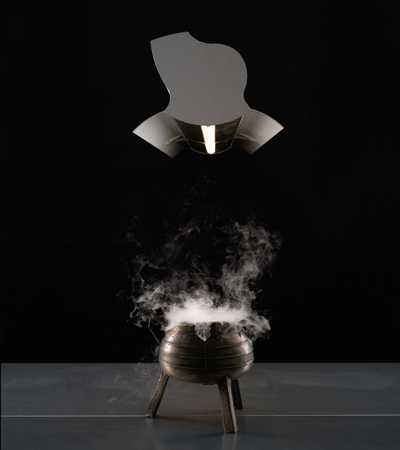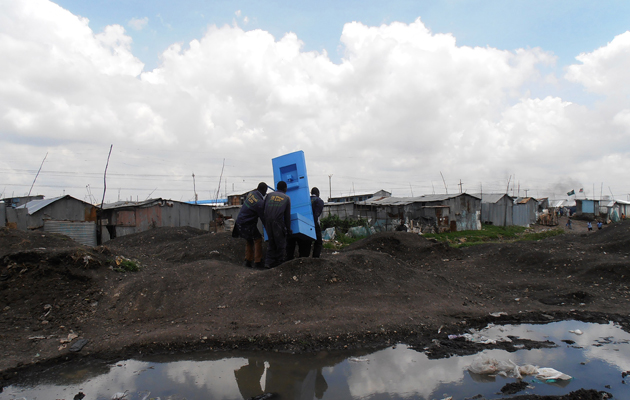|
A playful exhibition of work by the Viennese design firm echoes the ethos of the museum’s permanent display – that design comes alive through its relationship with its users, says Caia Hagel Andy Warhol could have conceived something like the MAK Design Lab in Vienna. Founded to mark the 150-year anniversary of the Austrian museum, the exhibition traces the popularisation of high design, inviting viewers to find personal meaning in objects of daily ritual. Under the visionary direction of Christoph Thun-Hohenstein, this theatrical experience celebrates the practical value of intelligently created things. The permanent installations recount the evolution of design from industrial and individual-use perspectives, in themes that include cooking, eating and drinking, sitting, travelling, communicating and self-ornamenting – a journey that culminates in a room devoted to Helmut Lang’s beautifully mounted undergarments and digitalised archives.
EOOS, Lighted range hood for bulthaup b2 Now, one year into its opening, the MAK Design Lab is staging a lively show of work by Viennese design firm EOOS, to interact with its permanent collection – itself an EOOS project. Gernot Bohmann, Harald Gründl and Martin Bergmann are the thinkers behind the Adidas Originals tribal motifs and the first computerised tables (designed for the A1 Austrian mobile phone flagship store) – inspired concepts that teeter between the archaic and the high-tech. From lipstick to toilets via robotic sofas, the content of this exhibition is quietly revolutionary. In a room of its own is a mechanical ballet of objects that underlines the remarkable number of patents the studio holds, as well as its philosophical and humorous inclinations. Pieces such as the Threesixty Sofa for Walter Knoll permanently changes orientation, creating a range of seating positions that mimic the idea of French conversation furniture. Meanwhile, Open Space, the corner shower for Duravit, folds away to become a space-enlarging mirror. “It’s not an intervention, it’s a dialogue,” Harald Gründl says. “Sofa magic happens when Threesixty moves without us seeing how. Yellow robot machines operate the objects in a playful way. Things come alive.” The interactive elements in this room echo the MAK Design Lab ethos that people give meaning to objects when they use them – the things we live with are enhanced through their functional relationships with us.
EOOS exhibition view: Various occasional tables, standardised products, and models, 2010–2013 In another room, the Blue Diversion Toilet illustrates a larger-scale form of human interaction with design. A collaboration between EOOS, the Bill & Melinda Gates Foundation and the Swiss Federal Institute of Aquatic Science and Technology, this study investigates what people in slums in India and Africa experience when a luxurious object engages with concerns about sanitation, the environment and the community. The exhibition presents objects in a way that is both intimate and avant-garde. “‘Lab’ suggests experiment,” Gründl says. “Experimentation democratises design and enlarges its audience by relating it to personal experience.” In the kitchen section of the permanent show, for example, there’s a blackboard with the heading: “My Kitchen Is…”, where visitors reflect on and write about their own use of domestic designs. “This turns roles around and makes everyone an expert.” EOOS, curated by Thomas Geisler, is on at the MAK Design Lab until 17 May 2015 |
Words
Images: MAK/Nathan Murrell, Paul Prader , EOOS/Eawag |
|
|
||
|
Bill and Melinda Gates Foundation, Blue Diversion Toilet – field trial, Nairobi, 2014 |
||




















